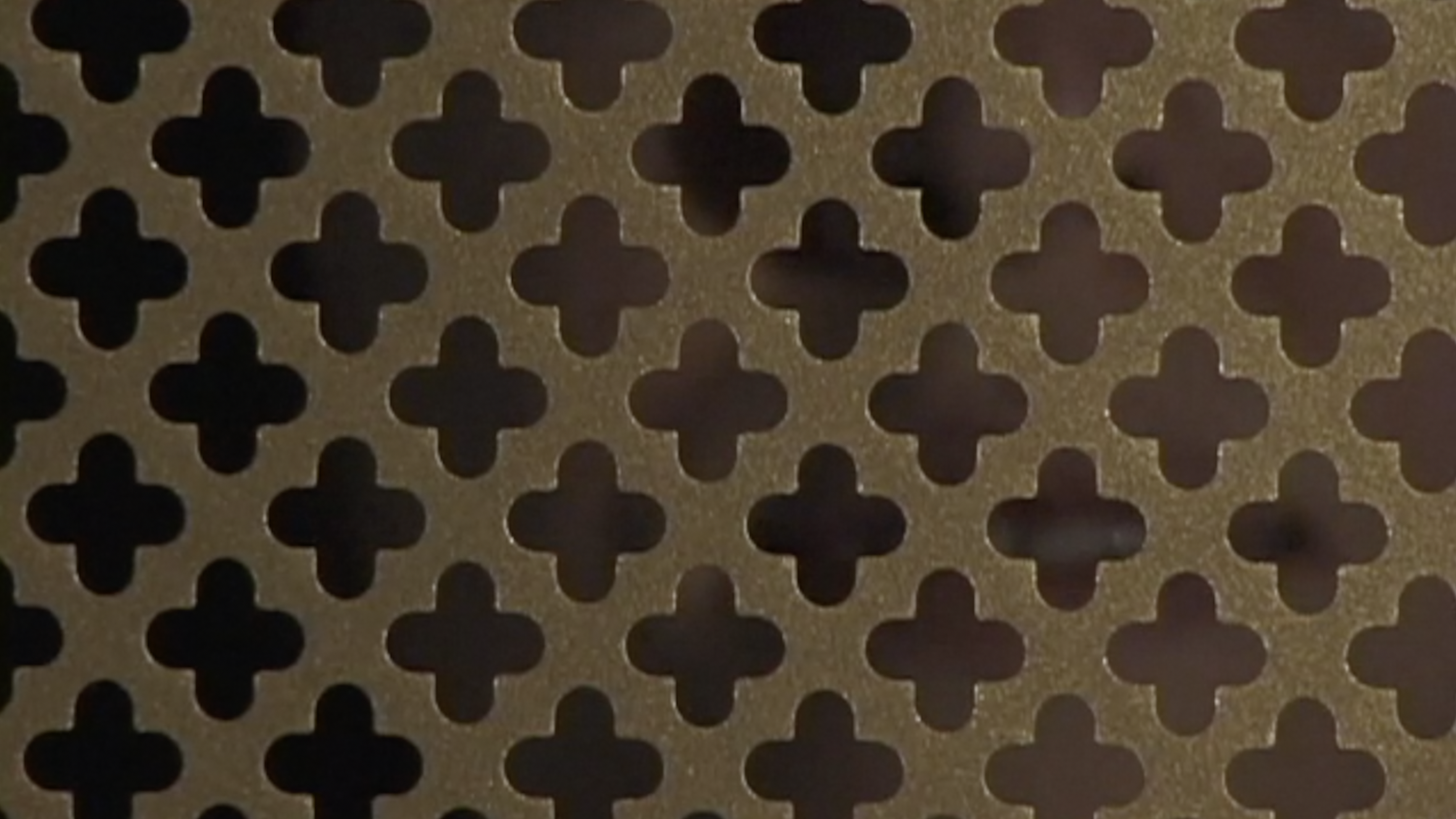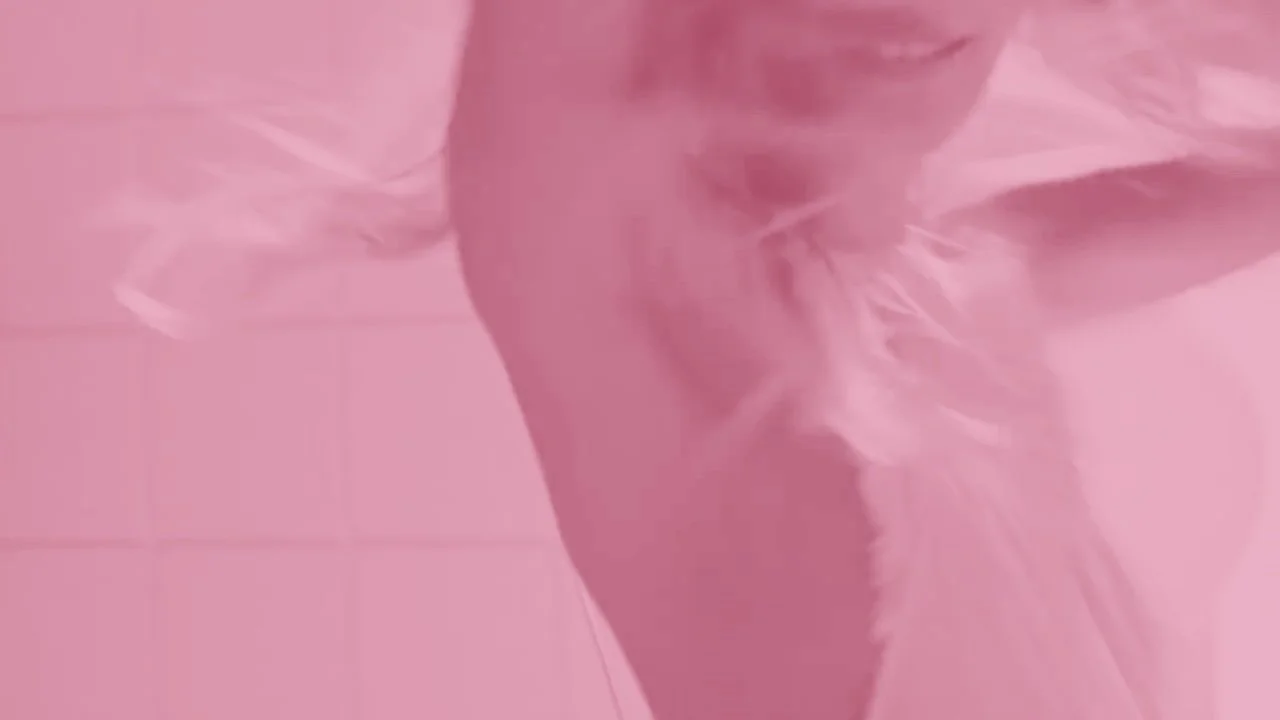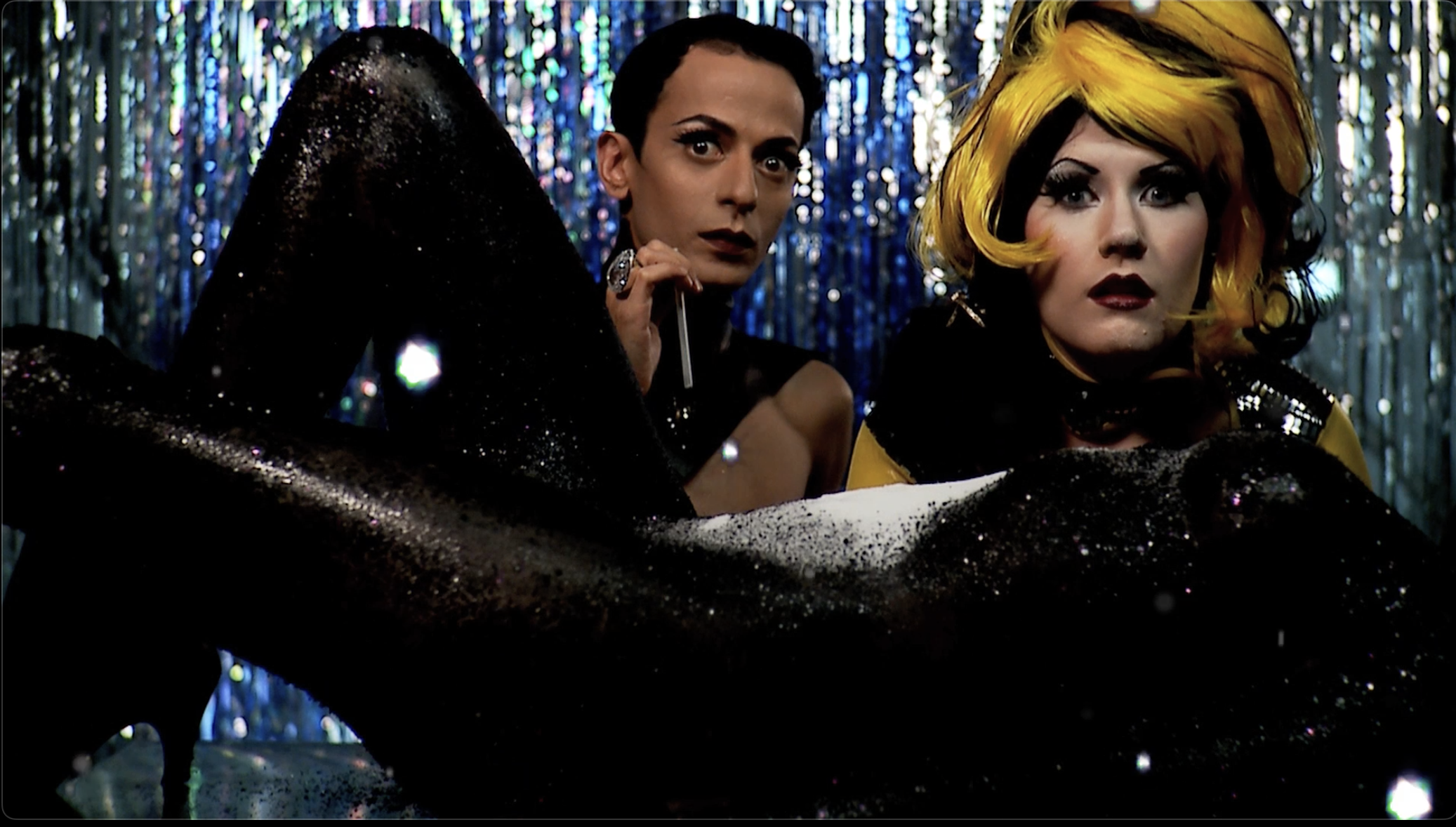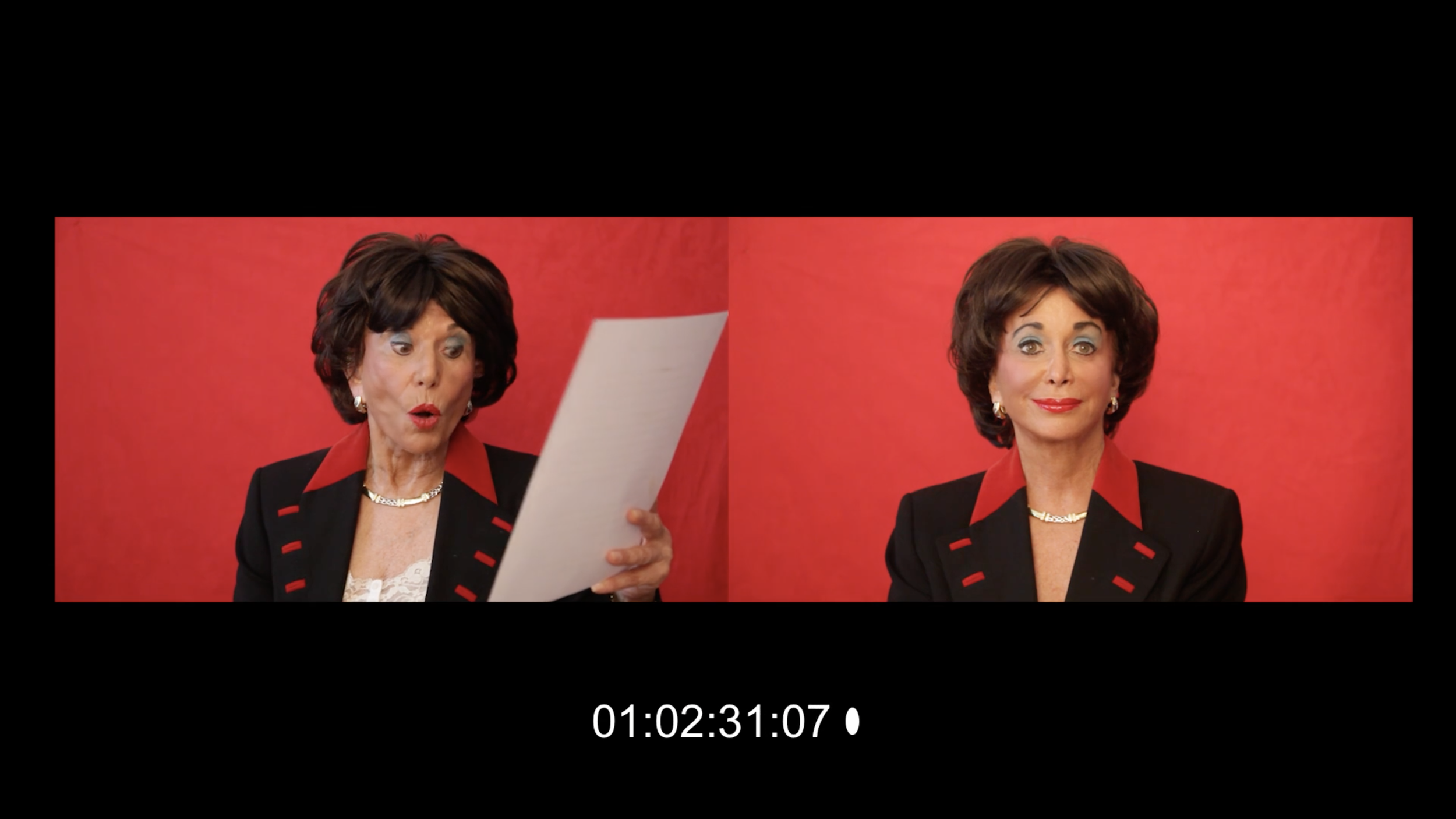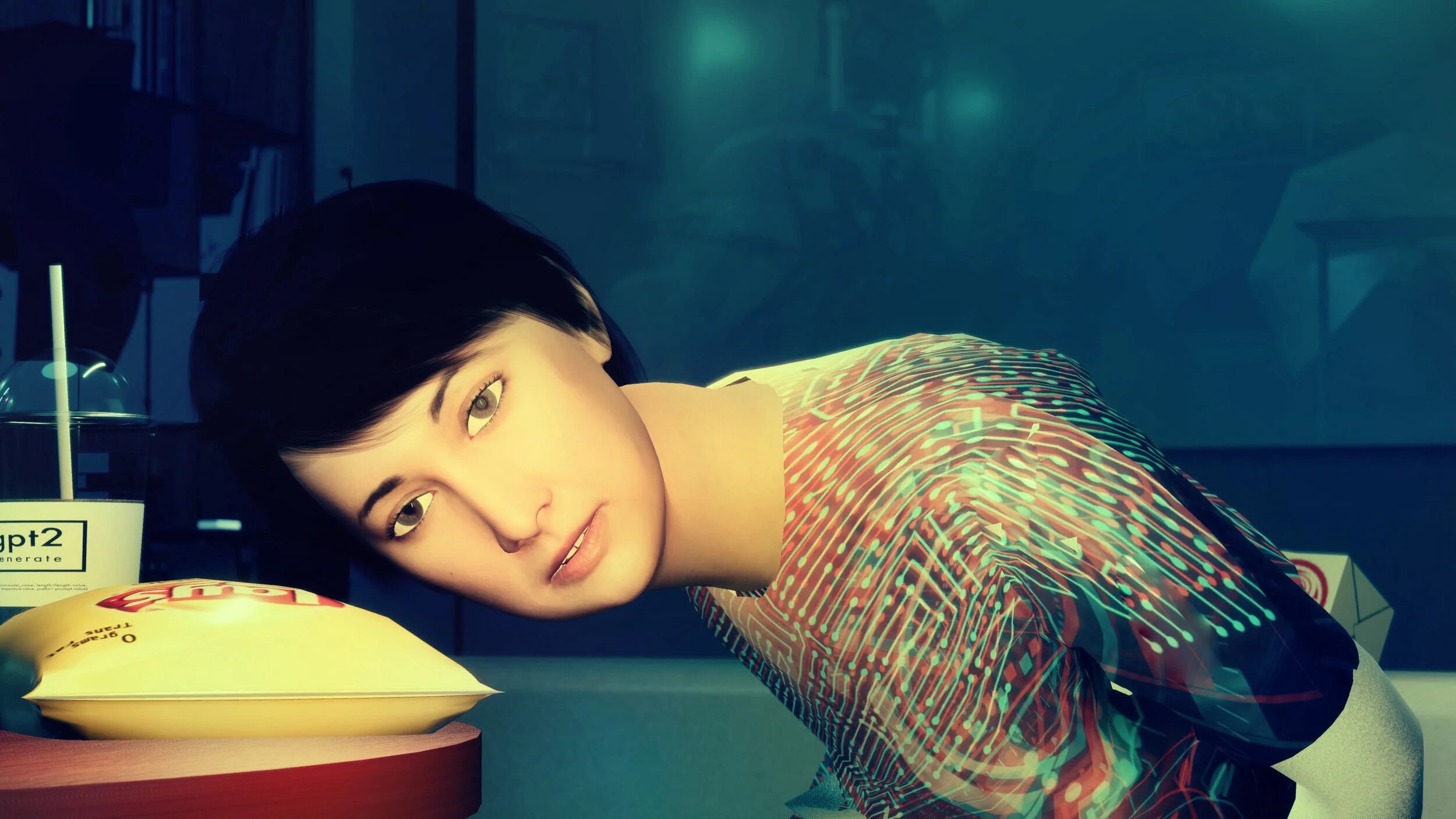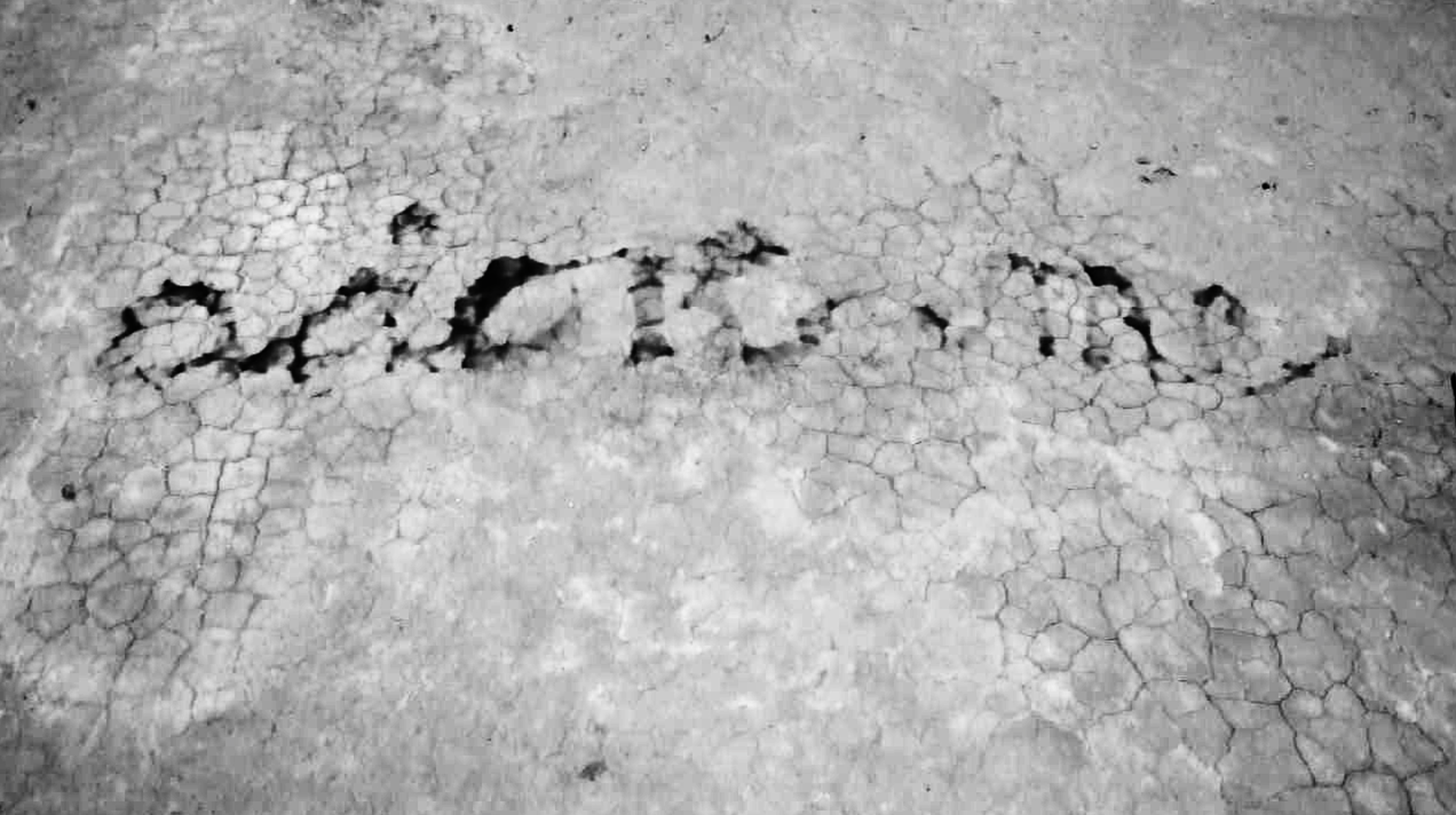signs and symbols: artists & allies V
August 4 - September 30, 2022
Opening Reception & Performance:
Thursday, August 4, 7:00 - 9:00pm
Opening Online: Thursday, August 4, 12:00pm
Closing: Friday, September 30, 6:00pm
signs and symbols is delighted to present artists & allies, the fifth edition of our annual summer program dedicated to time-based media. Held both online and in person this year, the exhibition features video works and new live performances. The virtual component of the exhibition will be on view on our website through September, with performances hosted at the gallery on select dates in August. During the opening reception on Thursday, August 4 at 7pm, a live performance by gallery artist Tony Orrico with collaborator David Hurlin will inaugurate artists & allies V, in addition to marking Orrico's first performance in New York since 2019.
A tradition since the gallery's very first year, artists & allies brings together new, historic and even in-progress works by gallery artists alongside "ally" artists. It is a celebration of experimentation, a commitment to collaboration and an ever-evolving exchange between mediums, subjects, generations and individuals. As we enter the fifth year of this program, artists & allies is also a testament to the joy and power of community — we consider ourselves incredibly lucky to continue to be surrounded by family and friends in the forms of artists.
Guided by signs and symbols' artist-centric ethos, artists & allies is shaped by the artists, rather than a singular theme or point of view — we follow where they lead us. And so we turn a mirror towards ourselves — our ingrained biases, our hopes and dreams, our fears, our memories, our creative practices. A journey unfolds from buildings in Berlin to the Chilean desert to virtual realities. From our children to our mothers to our grandmother (from the beyond). An artist sits perilously high atop a tower. Another artist smokes a cigarette. Women spin without end. An artificial intelligence tells a story. A digital assistant rebels. The moon, indifferent, cycles above us. What side are we on? What do we desire? We ponder the malleability of words, the inadequacy of language, the demands of social norms in the art world. Release is found through creation and destruction, through dance, through movement and sound.
Enjoy! xx
participating artists include:
pola sieverding | ornella fieres | annabel daou | carol szymanski | mischa leinkauf
michelle handelman | discoteca flaming star | alex mcquilkin | adam broomberg | tony orrico
jamie diamond | itziar barrio | barbara gundlach | laura parnes | sarah anderson | jaša
alison nguyen | melinda jean myers | laila franklin | kate vincek | david hurlin | shelley marlow
performance dates:
Thursday, August 4 | Tony Orrico & David Hurlin | live performance | 7-9pm
Thursday, August 11 | Melinda Jean Myers, Laila Franklin & Kate Vincek | live performance | 7pm
Friday, August 12 | Melinda Jean Myers, Laila Franklin & Kate Vincek | live performance | 7pm
ANNABEL DAOU
which side are you on?, 2012
“It was the idea of the revolutions we watch on our screens and the games of victory and defeat that we are pawns in that drew me to thinking about old electronics, telephones, televisions, transmitters which seem to have another side or an interior. This got me thinking about the question of which side of that screen we are on. In 2012, I began walking through the streets of NY asking people randomly and with no context, explanation or preparation, 'which side are you on?' The work was not motivated by Occupy but happened to coincide with it, and so many of the responses became inflected with what was happening at the time. After Zuccotti Park was closed, it was astounding to me how quickly responses shifted. As the Super Bowl came into view quite soon after, the answers went from the big picture of the system being called into question, to the safe zone of rooting for the Giants. This is the resulting work… a video of a confessional screen and the audio I collected.”
Annabel Daou, which side are you on?, 2012, SD color video with sound, RT 3:06.
ADAM BROOMBERG
Tiny Diamond, 2022
“I recorded a conversation that I had with my son Marlowe. I asked him to tell me his ten greatest fears. It was a conversation that happened just before he fell asleep, in that tender state somewhere between consciousness and sleep. And it happened about a year ago when he was still 8, in that sacred state between the honesty of childhood and the self-consciousness of adolescence. Over the next year I had him perform the conversation into the camera every few months. I also hired an actor to perform the role of a parent or maybe and older version of himself. I layered each of these renderings over one another which made this strange minestrone dream. I hope he doesn’t resent me for sharing this with you. I didn’t ask for his permission.”
Adam Broomberg with Lalie Rose, Tiny Diamond, 2022, Single channel color video with sound, RT 11:03.
ALEX MCQUILKIN
Magic Moments (Technology Transformation Wonder Woman), 2021
A follow-up to an earlier video titled Magic Moments (Preliminary Materials for a Theory of the Young-Girl), this new work employs the same theme of spinning women that is so often used to advertise clothing and perfumes to a target female audience. But their vertiginous spinning gets them nowhere besides objectified for their youth and beauty, with an insinuated promise of freedom that is a falsehood. In addition to the theme song from Godard’s film, Le Mepris, the video also references Dara Birnbaum’s seminal 1978-79 video Technology/Transformation: Wonder Woman, which featured hijacked clips of Wonder Woman spinning from the popular 1970s TV show.
Alex McQuilkin, Magic Moments (Technology Transformation Wonder Woman), 2021, Single channel video, RT 2:30.
MICHELLE HANDELMAN
Dorian, The Wallpaper Collection: Gothic Snow, 2009-2011
GOTHIC SNOW is part of the series DORIAN, THE WALLPAPER COLLECTION, a selection of single-channel animated moments from Michelle Handelman's multimedia project, DORIAN, A CINEMATIC PERFUME.
DORIAN, A CINEMATIC PERFUME is a multiscreen video installation based on Oscar Wilde’s 19th century novel The Picture of Dorian Gray and its themes of decadence, narcissism and the meaning of art. Handelman has interpreted the story and its queer undertones by casting Dorian as a young queer woman discovered by a fashion photographer, then catapulted into the world of empty celebrity. She falls under the tutelage of a famous drag queen and becomes a nightclub luminary, constantly followed by the paparazzi. These media images become the infamous portrait, grotesquely mutating as she grows more beautiful and famous, culminating in her own narcissistic destruction.
Like the films of Warhol and Godard that blur the lines between performance and reality, all of the performers in Dorian are playing some version of themselves. Sequinette (Dorian) is a gender-bending drag impresario; Armen Ra (Lord H) is a renowned Theremin player; K8 Hardy (Sybl Vain) is a performance artist and co-creator of the queer art collective LTTR; Quin Charity (Basil) is a media artist; and Flawless Sabrina (Dead Dorian) is a drag legend.
Michelle Handelman, Dorian, The Wallpaper Collection: Gothic Snow, 2009-2011, Single-channel HD video with color and stereo sound, RT 1:04 loop.
JAMIE DIAMOND
Mother Study: Audition Tapes, 2015
For her Life in Fiction series, Jamie Diamond spent months auditioning actors to play the role of her parents. She dressed them in their clothes, bought and styled wigs based on their hair from that time and adorned them in period jewelry and props. Diamond then asked each actor to pose based on the brief character analysis she provided. Never at any point did the actors know they were performing as her parents.
Jamie Diamond, Mother Study: Audition Tapes, 2015, Single channel color video with sound, RT 2:42.
ALISON NGUYEN
ANDRA8: MY FAVORITE SOFTWARE IS BEING HERE, 2020-21
Andra8 is a simulacral subaltern, created by an algorithm and raised by the Internet in isolation in a virtual void. From the apartment where she has been placed, Andra8 works as a digital laborer, surviving off the data from her various ‘freemium’ jobs as a virtual assistant, a data janitor, a life coach, an aspiring influencer and content creator. The domestic space from which she is constantly surveilled looks like the inoffensive love child of the results of a ‘Mid-century modern’ Pinterest search, a mental health hospital and a perpetually sunny L.A. Airbnb. In other words: A kind of antiseptic neoliberal purgatory. As she multitasks throughout the day, something begins to trouble Andra8: she begins to explore the implications of an existence that depends on her compulsory consumption and output of human data, and what arises when one attempts to subvert these conditions.
ANDRA8: MY FAVORITE SOFTWARE IS BEING HERE below is a screening version of the video, which is part of a larger body of work which spans installation, performance and works on paper by artist Alison Nguyen. Andra8’s speech was written in part originally by Nguyen and in part by a machine learning program Nguyen created with Achim Koh, a researcher and programmer whose work engages digital culture and the infrastructure of knowledge production. The program uses training data collected from the posts of “B-list” social media influencers to generate passages of text. Though the combinations of words are novel, the machine has no inherent creativity — it can only learn from what people feed it. Andra8 thus expands on the dialogue taking place around technology, gendered digital labor and the construction of self in the age of ambient intelligence, subtly revealing invisible structures of control.
Alison Nguyen, ANDRA8: MY FAVORITE SOFTWARE IS BEING HERE, 2020-21, Single channel HD color video with sound, RT 19:47.
POLA SIEVERDING
CLOSE TO CONCRETE II, 2014
"Something that never changes, by day, or by night. The past represents its future. It goes forth in a straight line, yet it ends by coming full circle."
—Lemmy Caution to Alpha 60
Following the video CLOSE TO CONCRETE I that was filmed in Lisbon in 2011, CLOSE TO CONCRETE II, filmed in Berlin in 2014, is the second in a series of architectural portraits by Pola Sieverding. Both videos not only show how formal aesthetic concepts of art since the early 20th century have conditioned our gaze towards our surroundings, but also explore the artist's interest in materiality seen through the camera and the narrative quality of (atmospheric) sound.
In CLOSE TO CONCRETE II, we see the facades of Märkisches Viertel and Marzahn-Hellersdorf, two large-scale housing estates in Berlin. The camera slowly and deliberately pans across its main materiality, concrete, and the structures formed by its windows invite the viewer to contemplate not only the architecture’s aesthetic language but also about the living space it is defining. Developed from different sources like the “Symphonies of the planets - NASA Voyager Recordings” from 1977 or Jean-Luc Godard’s “Alphaville” from 1965 and a certain “space” sound composed from various wind recordings and synthesizer sounds, the soundtrack enhances the idea of a distant future which has now become the present — that present being the mid-20th century, with its race to the moon and modern concepts of mass organization.
Pola Sieverding, Close To Concrete II, 2014, HD color video with sound, RT 15:20.
DISCOTECA FLAMING STAR
Attempt One For A Violent Silent Movie, 2021
In 2021, after more than a year of self-conscious, vulnerable and ubiquitous video conferencing, after more than a year of Discoteca Flaming Star feeling like a wounded collective, we used a rear screen to completely close our loggia toward the street, just as one closes the eye with the eyelid. A kind of membrane in which to hold our de-placed longings throughout the days, with the sun, in the darkness of the night, with film lights... all in the dullness of the material.
The “home side” of this blunt dull lid membrane was broadcast live 24/7 to the video platform twitch for the duration of the exhibition Die Balkone. Here, in this space between the lid and the camera we shot fragment 61 of our film Ingrid (2003 - so far), an encounter of our fictional member Ingrid, slowly turning away from the lid, and of the artist Adam Bromberg, smoking.
The poem on the rear screen was the following:
Orchid impact bruises stains tongues carmine lampblack vermilion madder ultramarine.
—Berlin, July 1, 2022
Discoteca Flaming Star, Attempt One For A Violent Silent Movie, 2021, Single channel color video, RT 3:25.
MISCHA LEINKAUF
City Edges | 01, 2022
What can we expect from the most remote edges of a metropolis? In very short clips, City Edges visualizes sharp-minded observations of personally defining artists.
Mischa Leinkauf, City Edges | 01, 2022, HD video with sound, RT 1:00.
LAURA PARNES
The Real Art World (Episodes 4), 2004
The Real Art World Episodes explore the awkward social interaction of the studio visit. Before a work of art is chosen for an exhibition, gallerists or curators visit the artist's studio to meet the artist and see the work in person. Consequentially, the artist must convince the visitor of the value of their work. Like a confidence game or a first date, the power dynamics of the studio visit are wrought with miscommunication and ego clashes.
Laura Parnes, The Real Art World (Episodes 4), 2004, Single-channel color video with sound, RT 4:00.
SARAH ANDERSON
My Cannibal, 2015
In My Cannibal, Sarah Anderson works with ideas of convergence drawn from film and her own sculptural practice to describe personal and productive evolution as a kind of cannibalism. My Cannibal documents the artist’s attempt to destroy her own fresco sculpture, Hanging Man. This failed process is placed in parallel to the destructively erotic relationship between the two protagonists in Ingmar Bergman’s film Persona. The video sounds a desultory call-and-response interchange drawn from the monologic dialogue between the active character and the mute object of her aggressive attention. This text is enacted by the artist in dialogue with her hanging sculpture. In the merging of individual characters, we can see the double as something to be eaten, or as something to be demolished.
Sarah Anderson, My Cannibal, 2015, Single channel color video with sound, RT 5:17.
ORNELLA FIERES
Tide, 2014
Ornella Fieres recorded her video work Tide in the Griffith Observatory in Los Angeles. In fast motion, it shows the simulation of the lunar phases as a projection on a ball. Further, the artist converted the data of her video into a soundtrack. Two versions of the film come about, one visual and one auditive, which are played back simultaneously. The video signals that have been converted into sound by the artist resemble NASA's audio recordings from space. They are reminiscent of the noisy and crackling sounds from the radio which emerge from interfering electromagnetic waves. Also, light is nothing but electromagnetic radiation, visible to the eye. Ornella Fieres has transformed the light of her film's data into audio waves—just as NASA did with waves from space. Similarly, both forms of waves can eventually be located in the narrow array of the conceivability of the human senses.
—Tina Sauerlaender
Ornella Fieres, Tide, 2014, Single channel black and white video with sound, RT 10:07 loop.
CAROL SZYMANSKI
The Grammar of Sound Waves, 2022
The Grammar of Sound Waves is an offshoot of a larger video/performance work, Lost Contact with 12 Sentiments (a nod to resignation). Nine characters address the relationship and meaning between the two words “tongue” and “twisted.” Ocean waves become a metaphor for “tongue” and the wind a metaphor for “twisted.” The spoken dialogue (with subtitles) is juxtaposed with dramatic abstract images of the ocean. Words in this float or intertwine between nonsense and sense, not unlike how the wind and waves intertwine. Lost Contact with 12 Sentiments can be viewed in residence at signs and symbols and soon as a performance in the fall of 2022 as part of the exhibition Singing in Unison, curated by Phong Bui, at Industry City in Brooklyn.
Carol Szymanski, The Grammar of Sound Waves, 2022, Single channel color video with sound, RT 3:32.
JAŠA
Adore me, 2018
“In the desert of Atacama, Chile, I brought two bottles of water to write adore me in the dust. It took only one minute and a half for it to evaporate completely. As the video might suggest a selfish cry out in the middle of the desert, my gesture was giving words to the earth."
JAŠA, Adore me, 2018, Single channel video, RT 14:38.
BARBARA GUNDLACH
Memory II (Searching for Memories), 2020
Composed with the video footage of a live performance from 2020, Searching for Memories is a diaristic reinterpretation of and reflection on the neurological phenomenon of memory loss. The work elevates and explores the inherently intrinsic human dependency on memory when it comes to the experience of self. The experience of feeling alive. Challenging this uniquely human ability to store as well as to lose memories, and to reimagine and therefore re-interpret memories as a way of self-protection and survival, the artist consciously elevates memories, good or bad, as the key element for understanding ourselves and our surroundings. Searching for Memories serves as a philosophical reflection on self, the fear of loss and the damage of trauma in societies. The work draws on the artist’s personal experience of losing her memory after a prolonged coma when she was a young woman and mother and slowly regaining it over the course of many years.
Barbara Gundlach, Memory II (Search for Memories), 2020, Single channel color video of performance with sound, RT 4:34.
MELINDA JEAN MYERS WITH LAILA FRANKLIN & KATE VINCEK
this time, 2020-22
this time is an episodic choreographic practice that began in January 2020 in Iowa City, Iowa. In response to the pandemic, the work developed into a series of nine, collaborative and site-specific choreographies that were archived over nine-months. Each iteration was made by defining the possible terms of the specific space and time, then creating the work from what felt connective, inspiring and honest for the artists to contribute. The practice became a commitment to continued creative processing during the uncertain and tenuous global landscape that framed it.
In July of 2022, the collaborators returned to Iowa City to create a long-form choreography in response to each episode. This duet contains a relationship to embodied memories, feelings and questions from the past in conversation with current desires and curiosities. While honoring and referencing what once was created, they find each other again in this work with as much presence as possible — finding a new, yet familiar topography each time.
Melinda Jean Myers with Laila Franklin & Kate Vincek, this time, 2020-22, Color video with sound, RT 25:52. Directed by Melinda Jean Myers; Performed by Laila Franklin and Kate Vincek; Video edited by Alex Dela Peña.
SHELLEY MARLOW
How My Grandmother Helped Finish Writing My Novel, 2000
I was on the final weeks of writing Swann In Love Again / The Lesbian Arabian Nights, with some final research about psychotropic drugs, schizophrenia (for Aunt Violet, the lawyer with mental health issues) and about women who in self-defense, accidently kill men (for the main character Swann). I researched on the internet: on the Amnesty International site and prisoners’ rights sites. I found out that ‘witches’ are still tortured and killed in the Democratic Congo.
…I wanted to get back to my writing on Monday, but felt weighed down with all of these facts. I had been to a support group for psychics and called a new friend from there, to give her my phone number.
We were on the phone when she said she heard static that she only hears when she gets a message from a dead person.
She asked, “Who is Sophie?”
I told her, “Sophie is my grandmother.”
She said, “Sophie is far away but wants to help you with the book. You are almost done. She said to concentrate on cloth. Something about the clothes … Maybe what the main characters wear? Something about the cloth. Also, enjoy yourself with writing.”
I was very touched. I put off running errands and sat down and made up some outfits for the characters to wear. This may not have been what my grandmother had in mind.
—Shelley Marlow, 2000
Shelley Marlow, How My Grandmother Helped Finish Writing My Novel, 2000, Single channel color video with sound, RT 6:28.
ITZIAR BARRIO
and Dan and (when some small metal is spun), 2022
and
Dan and
when some small metal is spun
The dragon will fire at any moment that
the body is not in a crisis,
And they are not
just a system. They are alive and breathing.
and Dan and (when some small metal is spun) is a video piece involving the creation of a narrative using artificial intelligence. The resulting grammar is glitched, subverted and at times incorrect. The language of poetry prevails in the final text, resisting logic and pointing to new possibilities. The script was generated in collaboration with creative technologist Jared Katzman, by using an algorithm that mimicked an amalgamation of texts across three datasets: a collection of texts from the Cyberfeminism Index; a subset of Poetry books from Project Gutenberg; and a manuscript of poetry from the performer Candystore. Through alternating different prompts to the AI model and putting them in conversation, dominant narratives around labor and bodies become transfixed by the salacious and radical musings of the trained artificial-intelligent model. This unpredictable text has been then interpreted by Candystore — uncertain and vulnerable — while being filmed.
Itziar Barrio, and Dan and (when some small metal is spun), 2022 4K color video with sound, RT 13:40.
